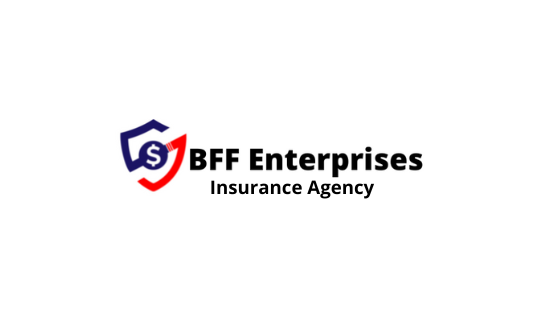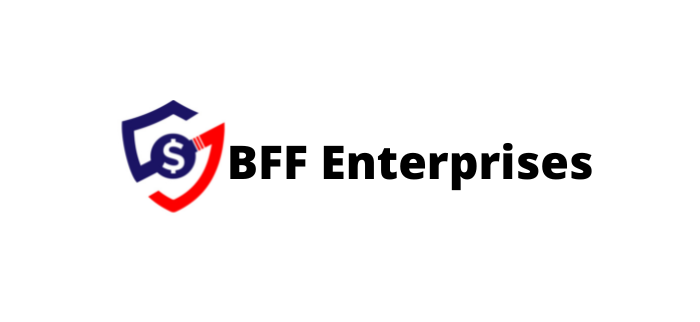The Ultimate Tax-Free Retirement Guide
- What is Indexed Universal Life Insurance (IUL)?
- How does an IUL work?
- How annuities work
- Pros and cons of annuities
- How to determine which annuity is right for you
Request Your Custom Tax-Free Retirement Plan!
Answer a few basic questions below to find out how much tax-free retirement income you could create
What Is Indexed Universal Life Insurance?
Indexed universal life insurance is a type of permanent life insurance. It stays in force as long as you stay current on your premium payments or until you reach the maturity date specified in the policy. Many IULs mature when the insured person reaches age 121.
Indexed universal life insurance has a cash value component where the gains and losses are tied to an index like the S&P 500. While the cash value rises and falls with the index, the insurance company actually invests in things like bonds and mortgages.

You can borrow against your cash value through a policy loan or withdraw cash value. When you die, your beneficiaries receive a death benefit, but the death benefit amount will be reduced by any loans not paid back or withdrawals you’ve taken from the cash value.
Universal life insurance sometimes has added flexibility to change your death benefits and/or premium payments, but only within specified limits. The main difference between indexed universal life insurance and other universal life insurance policies is how cash value accumulates.
How Does Indexed Universal Life Insurance Work?
When you pay the premiums on permanent life insurance, a chunk of that money goes toward the death benefit. Another portion pays for the administrative costs of your policy and the actual cost of insuring you. The rest is directed toward your cash value account.
The death benefit is paid tax-free to your beneficiary. The life insurance payout typically does not include payment of the cash value to your beneficiaries.
Cash value accumulation: The cash value portion of an IUL policy is not as volatile as the stock market, explains Eric Tarnow, head of products for AIG Life U.S. For example, variable universal life insurance is more tied to market fluctuations.
Instead, the cash value of an IUL policy is tied to the performance of an underlying index, such as the S&P 500 or the Nasdaq composite. “But consumers do not directly invest in that index,” Tarnow says. The insurance company uses the index’s rate of return to determine how much the account should be credited.
You can typically choose from one or several indices, depending on the insurance company. Tarnow notes that most IUL products also offer a fixed (declared) interest rate option in addition to the index-linked investment.
Floors, caps and participation rates: The cash value within an IUL won’t mirror an index’s exact gains and losses.
Floor: You’ll find there is a floor in place, which is the minimum rate that will be credited to your cash value. Your floor could be 0%, but that will protect you from losses.
Cap: On the flip side, there is usually a cap, meaning your cash value gains won’t go above a certain percent— even if the index performs above that threshold. For example, if your cap is 10%, and the index goes up 12%, the cash value tied to that index increases by 10%.
Participation rate: Your cash value gains are also calculated according to the “participation rate,” which is set by the insurance company. This is the portion of the index’s return that is credited to your account. It can often range anywhere from 25% to above 100%. If the IUL has a participation rate of 100%, you will earn all of the interest gained by your investments, up to your cap.
Another example is if the participation rate is 50% and the index gained 10% for the month, you’d actually earn 5% for the period. Though the growth is often tracked monthly, the cash value earnings are usually credited to the account once per year or every five years.
Though the internal policy expenses are deducted monthly, the cash value earnings are only credited to your account at the end of the “segment period” you selected. This could be as long as nine years but is most often once per year and can be as frequently as monthly if you elected dollar cost averaging (DCA).
This means your Annual Policy Statement could show no earnings even in an up market if the end date of the selected segment period is after the date of your Annual Policy Statement. “But that doesn’t mean your policy isn’t performing as expected,” points out Barry Flagg, president and founder of insurance analytics firm Veralytic.
While the floor cannot be changed throughout your policy, your insurer will change the cap and/or participation rate in response to changes in market conditions (such as changes in prevailing interest rates, the degree of equity market volatility, and the cost of options in the derivatives market).
Flexible premiums and death benefit: You have the option to adjust your premiums and death benefit amount if needed. If your account accumulates enough value, you could use those funds to pay your premiums.
If you decide to underpay or even skip a premium, the cost of insurance charges and policy expenses will nonetheless be pulled directly from your cash value account every month. So long as the cash value account is sufficient to cover these monthly deductions, then the policy will remain in force and death benefits would continue to be payable.
On the other hand, there may be instances when you are required to pay more in premiums than you expected. For example, if the index performs poorly, the subtraction of monthly policy charges could cause the cash value to drop and your policy could lapse without an infusion of more premium. If your cash value falls too much, the insurance company could put out a “premium call,” meaning you need to put in more money to avoid a policy lapse.
If your policy lapses, you lose out on all the money you put in, plus the death benefit.
Ready To Find Out How To Create Tax-Free Income For Your Retirement?
Click the button below to request a Free Custom Tax-Free Retirement
Plan from one of our Retirement Specialists

Cost of Indexed Universal Life Insurance
Indexed universal life insurance quotes are determined depending on the type of policy and particular insurer, says Flagg at Veralytic.
And your premium isn’t the only “cost” associated with an IUL. Indexed universal life insurance is known for having a lot of costs, administrative expenses, sales fees and commissions, the cost of insurance, surrender charges and more. These all impact the cost of your premiums and how much you can build in cash value.
When shopping around for an IUL policy, you’ll be shown projections of the policy’s potential growth. These illustrations are based on predicted interest rates, fees and more. However, because it’s impossible to predict what the market will do in the future, these (likely optimistic) numbers are only estimates and not guaranteed. Plus, the illustration may not include certain caps or fees.
Make sure to focus on the guaranteed parts of the policy illustration, and don’t assume your outcome will mirror the non-guaranteed projections.
“Current regulations in most states permit insurers to quote low premiums and/or project high account growth—without disclosure of either costs or the risks of additional premium calls, under-performance or policy lapse,” Flagg cautions. That’s thanks to a provision in the 2010 Dodd-Frank Act that exempts indexed universal life insurance from federal regulation.
It can make comparing the true value, costs and risks of various policy options very difficult.
“Individuals considering IUL must insist that any and all proposals include year-by-year cost disclosures and performance requirements,” Flagg says. Be sure to ask how premiums, fees and interest rates will impact the policy’s overall performance.
It’s also a good idea to request policy illustrations after you have owned the policy for a while, especially if you’re going to take a cash value loan. You’ll want to know if taking a cash value loan could potentially lead to a policy lapse.
Pros and Cons of Indexed Universal Life Insurance
Indexed universal life insurance is fairly complex, so it’s important to understand how it works before committing to a policy. Here’s a recap of the major pros and cons discussed above.
The Pros
- Flexibility with payments and death benefits
- Potential for investment gains but with limited risk
- Tax-free retirement income via policy loans
- Unlimited contributions
- Cash-value accumulation
The Cons
- High fees may eat into your cash value
- Rate caps could limit your earnings potential
- Cash value withdrawals (not policy loans) could be taxable if they contain money from investment gains
- Possible policy lapse due to poor setup
Tax-Free Income
Like all forms of cash value life insurance, indexed universal life insurance enjoys several tax benefits. One critical benefit for those seeking to use life insurance to create retirement income is the ability to keep all income created by an indexed universal life insurance policy tax-free in the form of policy loans.
As opposed to taking withdrawals from the policy, which is a taxable event on any policy gains, a loan is not a taxable event. This is one of the benefits that makes a properly setup Indexed Universal Life Insurance such a powerful retirement vehicle.
The income you create from a life insurance policy also does not count towards provision income.
This means it will not affect the taxability of your Social Security earnings.
This is all made possible because of the ability to take out loans against your policy (not taxable), which is different from withdrawals (taxable).
When set up correctly, the cash value that accumulates in your policy can allow you to consistently take loans against your policy later on down the road and create significant income that is tax-free.

Protection Against Stock Market Volatility
Indexed universal life insurance accumulates cash values based on premiums you pay and an interest paid on the cash value created by those premiums.
The actual interest rate depends on the movement in an index (usually a stock index) over a certain period of time (most commonly one year).
But despite paying interest commensurate with movement in a stock index, indexed universal life insurance does not decline in value if the market is down.
In fact, all indexed universal life insurance policies have a minimum accumulation guarantee. The unique functionality of indexed universal life insurance ensures against losses.
This protects you from losing money when the economy takes a turn in an undesirable direction.
The downside of this benefit is that the rate of growth is capped at a certain percentage rate.
Meaning if the stock market goes up 10% in one year, you may only get 4-7% of that move credited to your policy.
Like most financial vehicles, there are pros and cons, give and take with everything.
When it comes to retirement though, many would rather sacrifice some of their potential gains to make sure their nest egg doesn't lose massive amounts of value during economic uncertainty.
Is Indexed Universal Life Insurance Right for You?
There are many different factors when it comes to deciding whether an Indexed Universal Life Insurance policy is right for you.
This is why we strongly recommend requesting a FREE Custom Tax-Free Retirement Plan to help you determine whether or not this financial vehicle is right for you (just click the button below).
For the average person, an IUL is unnecessarily complex. If you’re planning for retirement, you might be better off funnelling your savings into a 401(k) or IRA. While those accounts are subject to contribution limits and don’t have the same principal guarantees, you’ll see more money when the market is performing well.
However, if you’re a high-income earner, the tax benefits of an IUL may be worth the cost of the policy. The same goes for long-term investors who are okay with potentially low returns in less-than-stellar years.
It is typically a good fit for people who want to participate in market performance but who may not want to have full financial exposure to market downturns.
We hope this guide gave you some clarity about how IUL's work. Your next step is to request your FREE Custom Tax-Free Retirement Plan by clicking the button below to see if this type of policy is right for you.
Find Out How Much Tax-Free Income You Could Generate For Your Retirement
Click the button below to request a FREE Custom Tax-Free Retirement
Plan from one of our Retirement Specialists

